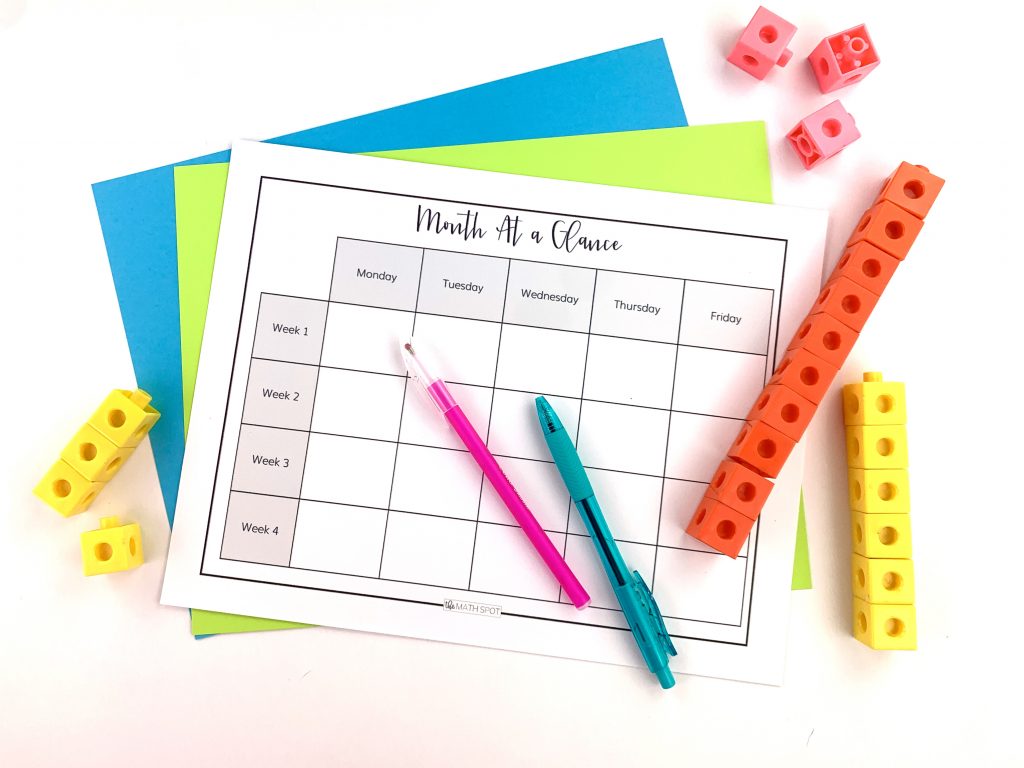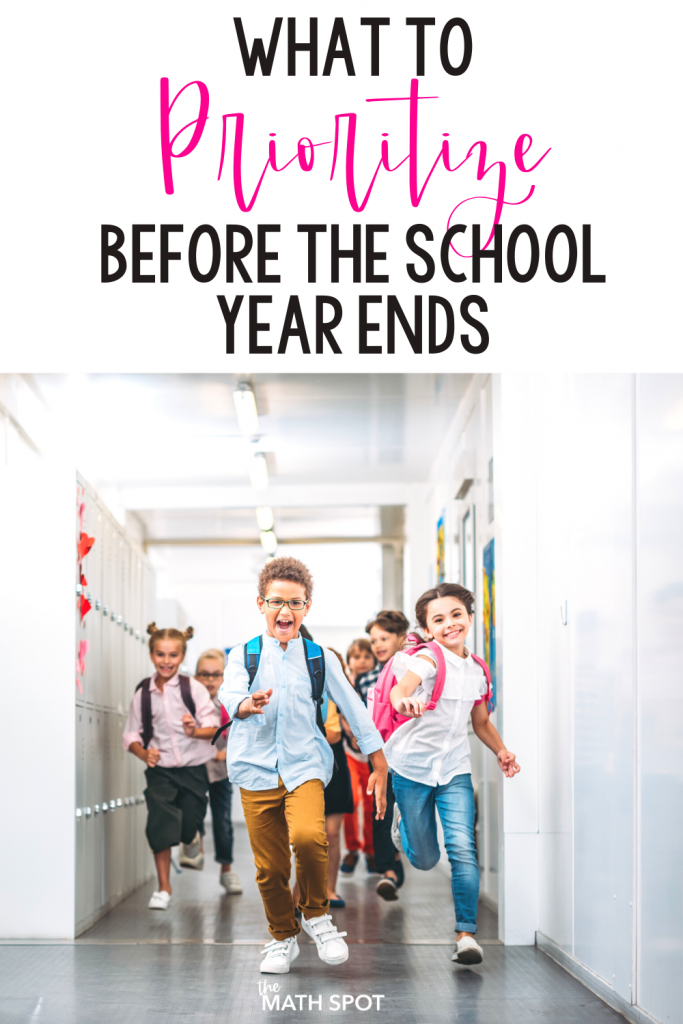
When the weather starts to turn, the days start to get longer and the promise of summer vacation starts to become a reality. And yet every year around May I was completely caught off guard when I looked at the calendar and at the actual number of sessions left I had to work with my students on their math intervention goals.
I know it’s not just me!
Whether you have a few weeks or even a full month left in the school year, you might be wondering what you should prioritize before your students leave for summer vacation. You may still have students who have a significant number of gaps in their math understanding and you want to set them up as best as you can before they walk out the doors of the school for break.
Revisit Your Current Math Intervention Goals
If you haven’t already, look at the goals you have previously created for your students. You created these goals for a reason so don’t let yourself become overwhelmed into making completely new math intervention goals at the end of the year. Start with what you have already created.
- What goals have your students already met?
- Where are they close to meeting goals?
- What goals are left to be addressed?
Looking at the work you still have left to do, make note of any goals having to do with understanding operations or place value. This best practice all year long according to the Institute of Education Sciences but is particularly critical when you are making final decisions around what you want to accomplish this school year.
Revisit Grade Level Expectations
Traditionally, math goals follow a progressions:
- Tier 1 = New grade level instruction
- Tier 2 = Grade level instruction not yet mastered
- Tier 3 = Goals and skills not mastered from the previous grade level
Depending on the time of year, the make-up of your class, and the access to interventions these guidelines are certainly flexible but they can be helpful in terms of thinking about what you need to prioritize with your students.
Based on the math intervention goals you have yet to accomplish with your students, what would it mean to your student if you did not accomplish each of these goals?
Consider a 1st grade student who, in May, has not yet mastered the counting on strategy and is also struggling to compare two-digit numbers. Counting on is a strategy that is visited as early as Kindergarten and is expected 1st-grade content. In 2nd grade, students will continue to do extensive work understanding 2-digit numbers. If I only had time to work on one of these skills before the end of the year I would tend to focus on counting on as a means of putting numbers together because it sets my student up for less disparity between their skills and grade level material heading into their second grade year.
Had I decided to spend that time working on comparing 2-digit numbers I would have a student who would be close to grade level in their place value understanding but far behind grade level in the area of operations. This will be a more difficult gap for the 2nd-grade teacher to address.
Reflect And Plan Ahead
I found that the more clear my goals, instruction and assessment were during the year, the less stressful the end of the year became as it rolled around.
Even when the dwindling number of sessions caught me off guard!
Before you move into your next school year, I wanted to share my math intervention planning template with you. Print this off now so you are ready to hit the ground running for the school year ahead. Come fall, you will be so thankful that this is already off of your to do list!



